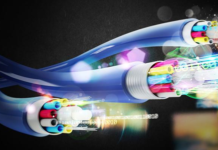
- Comprehensive guide for operators on how to maximize revenue opportunities today in IoT and on the road to 5G
- Real-time automation is the largest of the nine use-case clusters identified in Ericsson’s 5G industry digitalization report followed by enhanced video services
- 73 percent of respondents in the 5G industry impact report say they target first-mover advantages as their most strategic objective
The industries’ focus on 5G has shifted from viewing it as a disruptive technology to now embracing it as a central part of their strategy. In its latest 5G-IoT report, unveiled at Mobile World Congress today, Ericsson lays out a roadmap for operators to unlock the revenue potential of 5G-enabled industry digitalization.
In ‘The guide to capturing the 5G industry digitalization business potential’ – a sequel to the ‘5G Business Potential’ report – Ericsson delves deeper into how operators can potentially grow revenues up to 36 percent by addressing 10 key sectors.
The previous 5G Business Potential report found that operators can add a revenue of USD 204 to 619 billion (12 to 36 percent) to their forecast service revenues of USD 1.7 trillion in 2026. They can do this by targeting the digital transformation of other industries, such as automotive and manufacturing, using 5G-IoT technology.
In its latest 5G-IoT report, Ericsson examined more than 400 industry digitalization use cases across 10 industries: energy & utilities; manufacturing; public safety; healthcare; public transport; media and entertainment; automotive; financial services; retail and agriculture. Of the 400 use cases, over 200 are where 5G is expected to play a vital role. These were grouped into clusters to boost revenue opportunities and overcome deployment challenges.
Through extensive operator engagements and a carefully chosen analytical framework, Ericsson created a comprehensive guide for operators to address a range of challenges. The report also highlights how use cases can be evolved to reach the full 5G-enabled industry digitalization business potential. Lastly, the report looks at various operator initiatives and shares some of the lessons learned so far.
Harnessing 5G-enabled revenue opportunities
Digitalization revenues for ICT players between 2016 and 2026 are set to grow by 13.6 percent annually, while current operator service revenue growth is forecast at 1.5 percent. As 5G becomes increasingly vital to industries, there is a rise in the opportunity for new 5G-enabled revenues for operators. Of the total 5G-enabled value in 2026, up to 47 percent is addressable by operators. Through the evolution of use cases and clusters, operators can already begin to maximize the possibilities of 5G-IoT and industry digitalization to capture their full business potential.
Ericsson has identified nine clusters covering almost 90 percent of the addressable 5G business potential opportunity. Real-time automation is the largest cluster, with a revenue potential of USD 101 billion by 2026. Enhanced video services are a close second, with revenue potential of USD 96 billion by the same year.
Thomas Noren, Head of 5G Commercialization at Ericsson, says: “Our case studies have shown that operators employ strategic and operational activities to address challenges facing the success of their offerings. Even though they’re not yet 5G offerings, these activities – such as go-to-market channels and trial and experimentation – will be equally important, if not more, when evolved towards 5G.”
Earlier this year, Ericsson also released The industry impact of 5G report sharing 5G insights from over 900 companies with more than 1000 employees across 10 different industries.
The report revealed that trials of 5G use cases will start in 2018, after which activities will ramp up quickly, with over 70 percent of companies aiming to have use cases in production by 2021. Manufacturing, energy and utilities, public transport and financial services are the industries most likely to have use cases in production by 2020.
The major drivers for taking the next step to 5G from a strategic perspective are: create a first-mover advantage (73 percent); position themselves as an industry innovator (54 percent); leverage digital transformation enablers (53 percent); and build a solid base for IoT (46 percent).



















